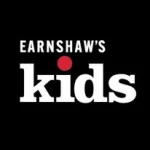It’s a time of reflection mixed with nervous anticipation.
As each year begins, we think about how the days ahead might impact our lives. We feel a sense of renewal and hope, and we make resolutions. It’s a time of reflection mixed with nervous anticipation. Thoughts of what was, what could have been and what might be swirl together. And while data analytics have provided a lifeline of sorts, the future remains educated guesswork at best, a mystery at worst. Not even experts or clairvoyants really know where the new year will lead. When it comes to predictions, unexpected swells and sudden storms capsize even the best-charted courses. If you want proof, just look at these sunken ships.
• In 1929, Popular Mechanics predicted the next big apparel trend would be clothing made from asbestos. (Yikes!) Experts praised the material for being strong, flexible, easy to clean and “as lustrous as silk.” While it would be adapted for fire-retardant work clothes, the everyday-fashion prediction went bust once the carcinogenic qualities of asbestos were discovered.
• In 1939, designer Gilbert Rhode predicted that by 2020 socks would be disposable. The so-called product prophet also said buttons, pockets, collars and ties would be ancient history. For starters, he didn’t see the smartphone coming and therefore the back pocket being a crucial apparel feature, especially for teenagers. He came close, however, on the necktie’s disappearing act, which is accelerating in the casual clothing revolution. As for Rhode’s prediction that hats would include antennas so wearers could receive radio signals, it’s not far off the mark. If he had guessed a gadget in one’s ear, he’d have been spot-on.
• In 1911, the Royal College of Surgeons of England predicted the human foot would evolve by 2020 to include only the big toe! Our smaller outer phalanges would morph into a solid structure, due largely to inactivity. Well, they might have gotten the sedentary lifestyle part right, but they miscalculated the speed at which evolution occurs.
Not all predictions were complete misfires, however. Nearly a century ago, Popular Mechanics foresaw the drone delivery age, citing the role pinpoint parachute deliveries would play in delivering consumer goods. The authors suggested that parcels could be delivered within feet of their intended target. Drones look to improve on that accuracy in the not-too-distant future. The Jetsons age is at our doorstep—literally.
The “automatic retail store” was another futuristic concept, envisioned in the 1940s, that’s coming to fruition. Back then, the idea was shoppers would insert a key into a slot next to the item desired, which would then be recorded onto a tape roll. At checkout, shoppers would hand the punched tape roll (similar to tape rolls in player pianos of the early 20th century) to the cashier, who would feed it into a translator machine and a conveyor belt would deliver the goods for bagging. Not all that seamless, really. This store-sized vending machine concept, however, has picked up speed with the recent rollout of Amazon Go as well as supermarkets, McDonald’s and Duane Reade in various beta stages of self-checkout concepts. They cut down on wait times and trim overhead costs. This issue’s feature, “Reinventing Retail” (p. 8), looks at several other recently introduced store innovations that no one saw coming—even a few years ago. Efficiency, experience and a broader purpose beyond “shopping” could be the wave of the future. I wonder if any prognosticators foresaw DSW’s latest pop-up concept that doesn’t sell any shoes and why the powers that be think it’s good for business. Read and find out why.
Speaking of reading, John E. Watkins Jr.’s out-there prediction, made in 1900, that by 2020 there’d no longer be a C, X and Q in the alphabet isn’t all that off-base. Watkins believed these letters would be “extraneous” (can’t spell that word without an “x”) because we’d be communicating in a more efficient way, using truncated words and expressions. OMG! Watkins the texting revolution! This lover of the written word, however, hopes none of our beloved 26 letters and punctuation become extinct. I learned—and love—my ABCs, and seeing the correct use of an apostrophe delights me.
Grammar nerdiness aside, the misses and hits have emboldened me to make a few predictions regarding our beloved industry. I envision a year of tremendous opportunity for brands and retailers. Those with ambition, passion and talent, along with a willingness to work extremely hard, will (likely) win the day. The estimated $30-billion U.S. childrenswear market is, again, there for the taking. I also predict Earnshaw’s will be on hand to report on the latest, greatest—and cutest—industry news, complete with helpful insight and expert analysis, as it has for more than a century. You can take that prediction to the bank. Happy New Year!
























Leave a Comment: